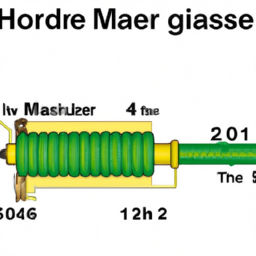Garden Hose How Many GPM
How Many Gallons Per Minute Garden Hose
An Introduction to Water Flow Through Garden Hoses
Garden hoses are an essential item in every homeowner's toolkit, whether they're a green thumb that's constantly tending to their yard or a once-in-a-while watering wiz. It's important to understand the basic mechanics of garden hoses before deciding on which hose setup you need for your home. We'll help you set the stage for holistically understanding the anatomy of water flow through garden hoses.
What You Need to Know About Water Flow Through Garden Hoses
Understand the rate of water flow through garden hoses is determined by a few factors. These include the size of the garden hose, the length of the hose, the material the hose is made out of, and the water pressure that's going through the nozzle. The most important question on many homeowners' minds is: how many gallons per minute (GPM) can my garden hose handle? Here's a breakdown of what rate of water flow can be expected for different sizes and styles of garden hoses.
Standard Garden Hoses
Standard garden hoses are 3/4 (inside diameter) and typically come in lengths of 25-50'. The typical water pressure for a home is usually around 40-60 psi. At this typical household pressure, a 3/4 garden hose would put out about 5 gallons per minute.
Expanded Flow Garden Hose
Expandable garden hoses have wider 3/4 (inside diameter) openings. Sample testing of expandable hoses found that some can output up to 10 gallons per minute (GPM). However, other tests by the United States Consumer Product Safety Commission show that expanding hoses should only be able to output 2.5 gallons per minute (GPM) based on the water pressure from a typical household.
5/8 Garden Hose
5/8 garden hoses are typically 25' long and can output up to 3 gallons per minute (GPM).
1/2 Garden Hose
1/2 garden hoses are typically 25' long and can output up to 2 gallons per minute (GPM).
3/4 Flat Hose
3/4 flat hoses are usually 25' in length and can output 1 gallon per minute (GPM).
How to Minimize Water Flow Through a Garden Hose
If your water is flowing through the garden hose faster than you were expecting, it might be helpful to reduce the amount of PSI (pounds per square inch) in your garden hose. There are a few ways to do this. The simplest way to reduce the PSI of your garden hose is to use a pressure regulator. This is a device that is attached to the hose and can control the PSI by reducing it.
Another option would be to use a hose clamp to wrap around the hose and reduce the amount of water flow. This is a bit more advanced and you would want to make sure to do research before attempting this.
What to Expect Next
Now that you understand the basics of water flow through garden hoses, you should have a better idea of what type of hose you need for your home. It's important to keep in mind that water pressure, material, and length all play a role in the amount of water flow you can expect from your garden hose so it's important to consider all these factors when deciding on your hose setup.
Additionally, if you're looking to reduce the amount of water flowing through your garden hose, you've got a few options to choose from to help you achieve the desired results. Keep in mind that reducing the amount of water flowing through your garden hose could affect the results you're looking for so you should do your research before deciding on which route to take.
In Summary
Garden hoses play an important role in every homeowner's toolbox and it's important to understand the basic principles of water flow through these tools before setting up an ideal setup for your home. The rate of water flow through your garden hose is determined by a few factors, including size, material, and water pressure, each of which can affect the expected GPM. Additionally, if you're looking to reduce the amount of water flow, there are a few options available to help you achieve the desired results.

Previous Page
